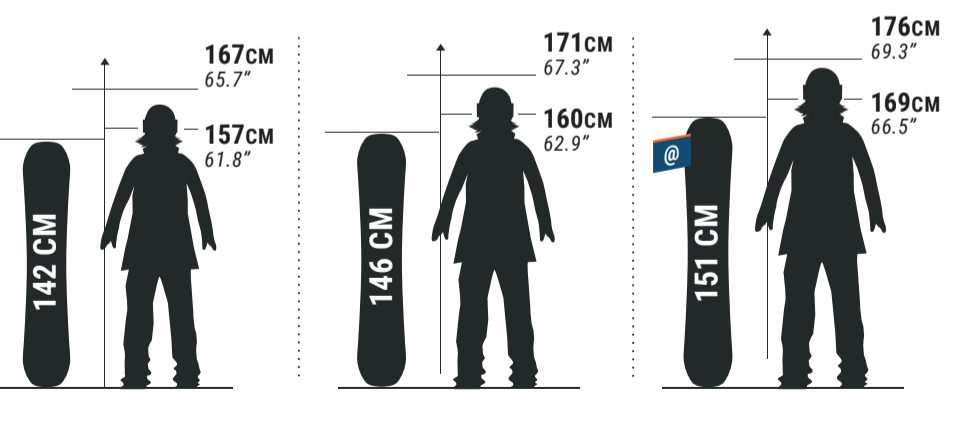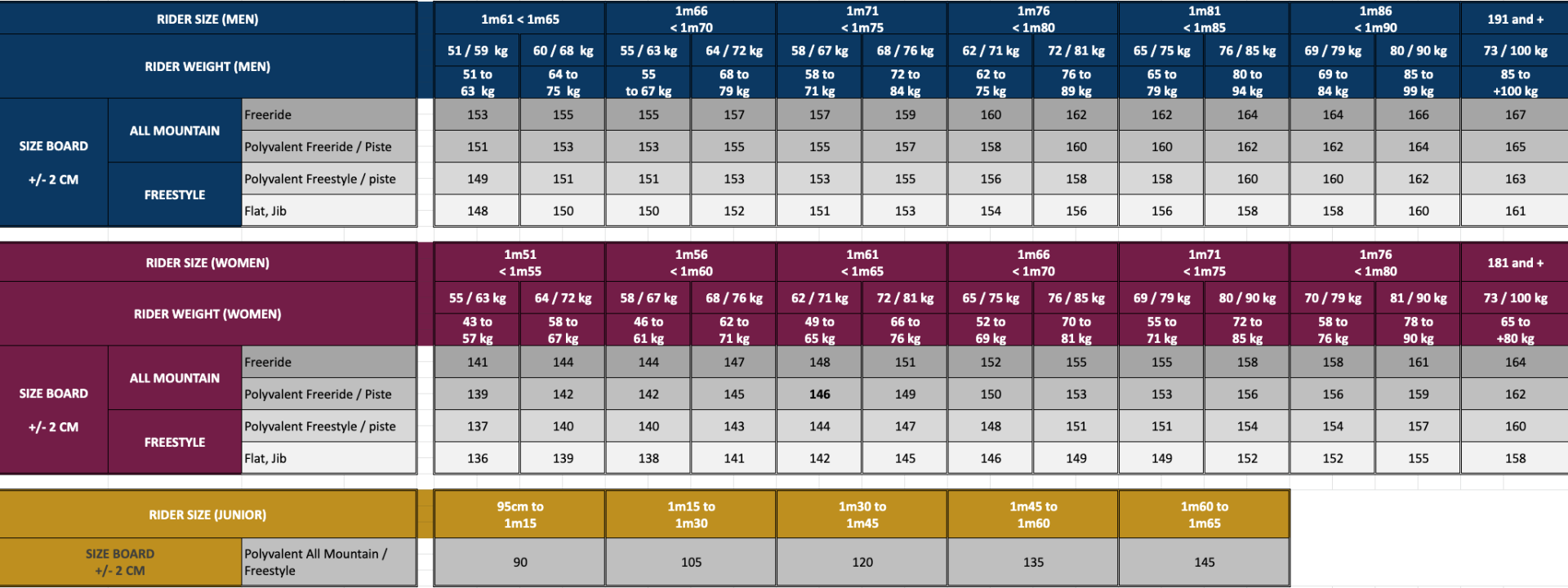1/Getting started
Here are a few things you should know before choosing your snowboard size:
1 - Snowboard size is given in cm (for example, where it states 155 on a snowboard (or sometimes just 55), it means that its size is 155 cm).
2 - You won't go wrong with your snowboard choice if it’s within 3 or 4 cm.
3 - The higher your level, the more centimetres you can add to your board (1 to 2 cm per level).
4 - Take into account both your height and your weight. If you are relatively heavy for your height then go for a slightly bigger and/or a higher level board as they are often more rigid.
5- You must choose the snowboard length as well as the width """".









